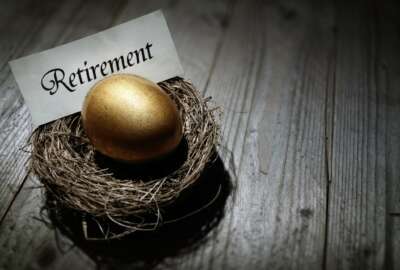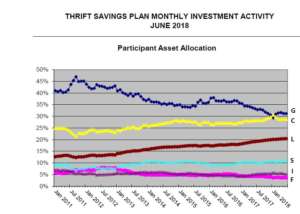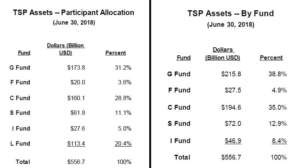
G fund: Super safe or high risk?
Financial planner Arthur Stein cautions against investing too much of your TSP in the G fund, because of inflation and taxes. You don’t want to see the...
The super-safe, never-has-a-bad day G fund remains the investment of choice for feds and retirees in the federal Thrift Savings Plan. As of June 30, more than 31 percent of the total assets in the TSP were in the special treasury securities G fund.
That compares to 29.8 percent in the S&P 500 index C fund, 11 percent in the small cap S fund, 5 percent in the international stock I fund, 20 percent in the self-adjusting Lifecycle funds and 3.6 percent in the bond-index F fund.
Over the five-year period ending in June the G fund return was 2.20 percent compared to 2.65 for the F fund, 13.47 percent for the C fund, 12.80 percent for the S fund and 6.80 percent for the I fund.
Those numbers, while official, tell different people different things. Most people know to invest for the long haul and not to panic. Yet during the Great Recession, tens of thousands of investors pulled out of the C, S and I stock funds and put their money in the G fund. And they stopped buying the higher-risk but higher reward stocks all the years of the recovery when they were, in effect, on sale.
Some have never come back to the stock market. With a big-time correction long overdue the question is what will people do when it hits?
Here’s a question from a reader and TSP investor from the Federal Aviation Administration:
“I would like your opinion. I just subscribed to a TSP Allocation service that recommended 100 percent G fund. I am five years from retirement and 10 years from withdrawing from TSP. I am 61-years-old, retired military and will have 15 years with the FAA in five years.” — Mike
He didn’t say whether all his future TSP investments would be in the G fund, or if he would have it as his hit-proof nest egg but continue to invest in the stock indexed funds, if he already is.
Financial planner Arthur Stein has many clients who are active or retired feds. He cautions them about being too conservative, too much in the G fund, because of inflation and taxes. Bottom line: You don’t want to see the purchasing power of your TSP account eaten up over time because inflation and taxes exceeded the G fund rate of return over the long haul.
So how about the wisdom of the crowd? Based on what you know, should Mike put all his retirement eggs in the G fund or does he need to do a lot more research? Let us know what you have done, are doing or would do. Arthur Stein and I will discuss your questions Wednesday morning on YourTurn radio show. Send questions to mcausey@federalnewsradio.com
Nearly Useless Factoid
By Amelia Brust
Honey is possibly the only food that never spoils, due to its unique chemical make-up. It contains little water naturally and is highly acidic, meaning that very few bacteria or microorganisms can survive in it. Bees also play a part in honey’s shelf life — their stomach enzyme glucose oxidase mixes with the nectar, breaking it down into gluconic acid and hydrogen peroxide. The latter chemical also prevents life from growing.
Source: Smithsonian.com
Copyright © 2025 Federal News Network. All rights reserved. This website is not intended for users located within the European Economic Area.
Mike Causey is senior correspondent for Federal News Network and writes his daily Federal Report column on federal employees’ pay, benefits and retirement.
Follow @mcauseyWFED







